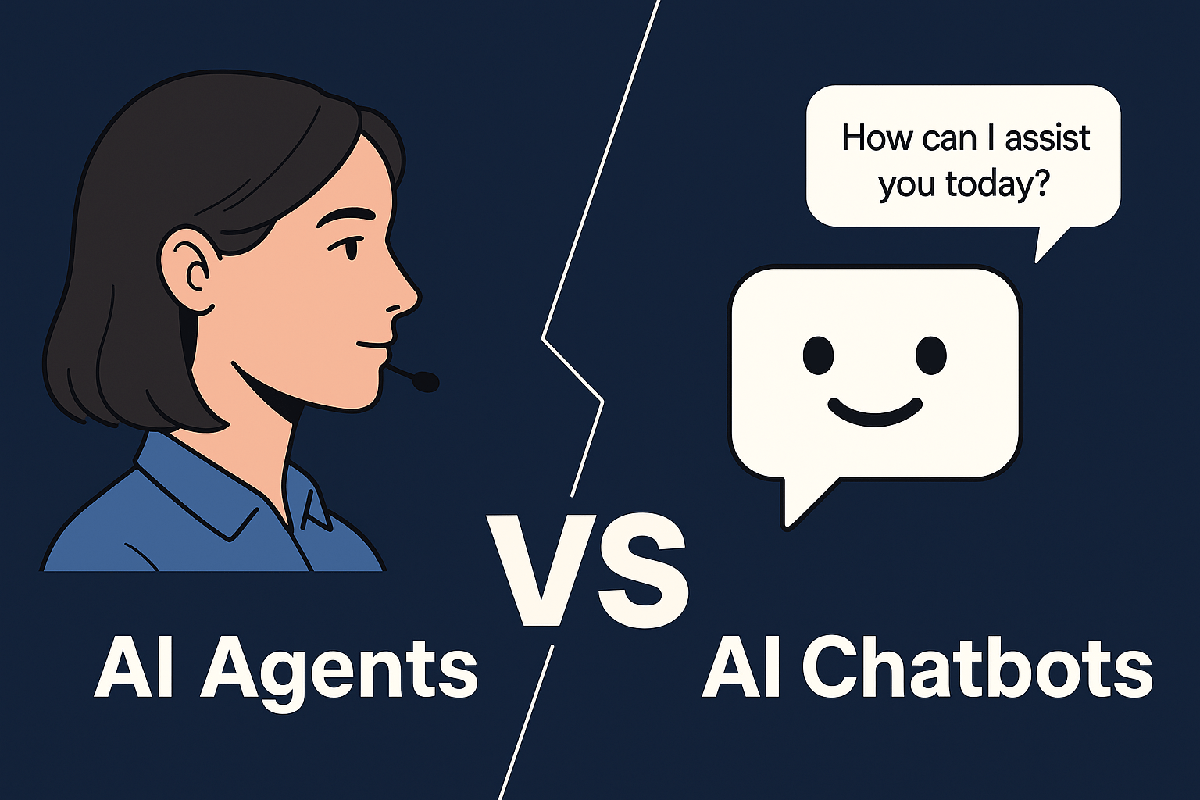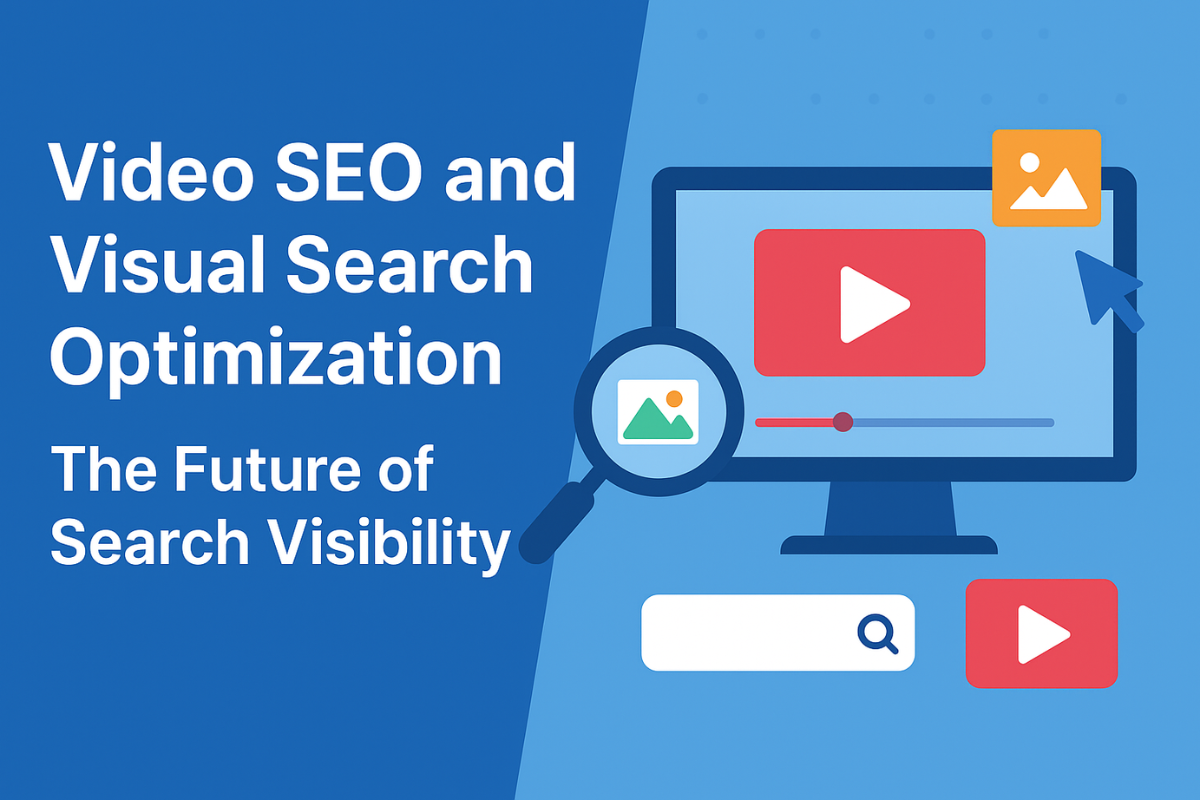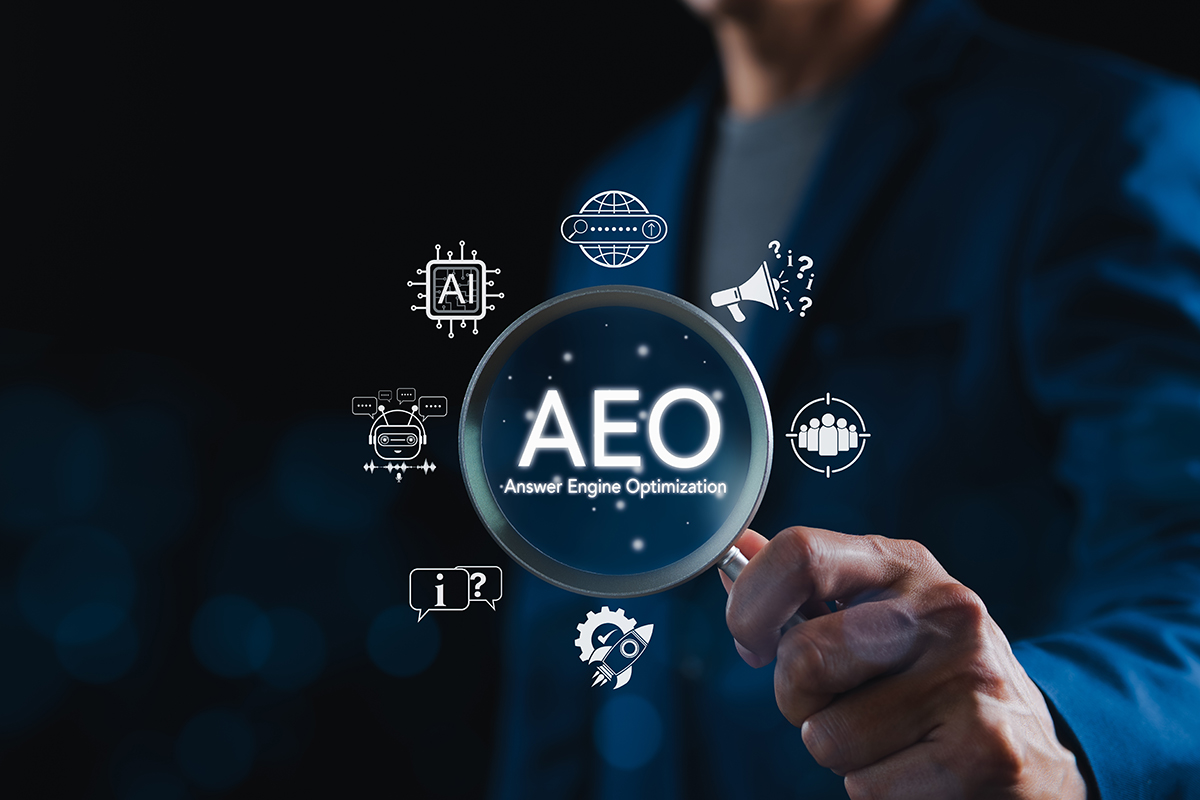In today’s digital world, people no longer just “search” for answers—they expect instant, clear, and reliable responses. That’s exactly where Answer Engine Optimization (AEO) comes into play. Unlike traditional SEO, which focuses on ranking web pages, AEO is all about creating content that directly answers user questions in a way that search engines and AI assistants can easily understand.
This module will walk you through the content strategies that transform ordinary articles, FAQs, and web pages into answer-ready content. By the end, you’ll know how to structure, write, and present your content so it has a much higher chance of being picked up by Google, Bing, Siri, Alexa, and AI-powered platforms.
What is AEO?
Answer Engine Optimization (AEO) is the next big step in the evolution of search engine marketing. Unlike traditional SEO, which focuses on ranking websites on search engine result pages (SERPs), AEO is about preparing your content so it can be selected and cited directly by answer engines such as Google’s AI Overviews, Bing Copilot, ChatGPT, or Perplexity. These platforms don’t just show lists of links—they give users direct answers. That means your content must be structured in a way that machines can understand, retrieve, and present in conversational form.
In simple terms, AEO is about creating content that provides clear, direct, and structured answers to questions users ask. While SEO often focuses on keywords and backlinks, Answer Engine Optimization (AEO) places higher importance on intent, context, and factual clarity. This makes it crucial for businesses and websites to adjust their digital strategies if they want to remain visible in an era where AI-powered responses dominate.
Why AEO Matters

The way people search online has changed dramatically. With the rise of AI-driven search assistants, more users are receiving answers instantly without ever clicking through to a website. This trend, often called the “zero-click search” era, has made Answer Engine Optimization (AEO) essential. If your business is not prepared to adapt, you risk losing visibility, even if your traditional SEO is strong.
Another reason AEO is so important is the credibility factor. When answer engines cite your content, your brand is positioned as a trusted authority in your niche. This not only improves brand recognition but also increases user trust. In many industries—healthcare, finance, education—being recognized by AI platforms can mean more visibility, more leads, and ultimately more growth. AEO isn’t replacing SEO; it’s the natural evolution of it. Businesses that adapt early will have the advantage.
The Evolution from SEO to AEO
The journey from traditional SEO to Answer Engine Optimization (AEO) shows how digital marketing adapts to user needs. SEO started with keyword stuffing, evolved into semantic search with Google’s algorithms like Hummingbird and BERT, and later focused on mobile-first indexing and user experience. Now, with AI-powered engines shaping how people search, AEO is the logical next step.
The difference is subtle but critical: SEO is about being found, while AEO is about being quoted. Instead of aiming for position #1 on Google, businesses must now aim for their content to be included in AI-generated summaries. This means formatting content in Q&A style, using structured schema markup, and focusing on user intent. Businesses that embrace this evolution early will dominate AI-driven visibility, while others will struggle to catch up.
Business Benefits of AEO
For businesses, Answer Engine Optimization (AEO) offers more than just visibility—it’s about capturing trust at scale. When your content is chosen by an AI system, it signals to users that you are a reliable authority. This type of recognition is much harder to earn through traditional advertising, where users are skeptical of paid placements.
Additionally, AEO can shorten the customer journey. Instead of clicking through multiple links and comparing options, users are often guided directly to the source cited in the AI’s answer. That means more qualified leads, higher intent traffic, and improved conversion rates. Businesses that optimize early for AEO are positioning themselves not just for today’s search, but for the AI-driven future.
Why Start with AEO Now
Answer Engine Optimization (AEO) is not a passing trend—it’s the direction search is heading. With AI systems like ChatGPT, Gemini, and Perplexity becoming mainstream, the way people discover information is changing faster than ever. If SEO is about ranking, AEO is about relevance and trustworthiness.
Starting now gives you a competitive edge. By learning how AEO works, structuring your content around user intent, and ensuring your website is technically ready for answer engines, you can secure long-term visibility. Think of it as building the foundation for your future digital presence—where your content doesn’t just appear in search but becomes the answer itself.
Types of Answer Engines
When we talk about Answer Engine Optimization (AEO), it’s important to first understand the types of platforms that qualify as answer engines. Unlike traditional search engines such as Google or Bing, answer engines focus on delivering a single, direct response rather than a list of web pages. Examples include Google’s AI Overviews (formerly known as Search Generative Experience or SGE), Microsoft’s Bing Copilot, OpenAI’s ChatGPT, and Perplexity AI. These tools are reshaping how people interact with digital content by offering instant, conversational answers.
Each answer engine operates slightly differently. Google AI Overviews rely heavily on structured data and authoritative sources to summarize results, while ChatGPT and Perplexity pull from both indexed websites and real-time data feeds. Voice assistants like Siri and Alexa also act as answer engines, providing spoken answers sourced from optimized web content. For anyone learning Answer Engine Optimization (AEO), understanding these differences is crucial because the way you format and structure content may change depending on which answer engine you’re targeting.
How Answer Engines Generate Answers
Answer engines rely on advanced technologies like large language models (LLMs) and retrieval systems to generate answers. Essentially, they scan the web, identify the most relevant, authoritative information, and then repackage it into a concise, conversational format. This is different from SEO, where algorithms mainly focus on ranking signals like backlinks, keywords, and on-page optimization. Answer Engine Optimization (AEO) is about ensuring your content is structured in a way that these systems can easily detect, interpret, and reuse in responses.
For example, if a user asks, “What are the causes of sleep apnea?”, a traditional search might show a list of medical sites. An answer engine, on the other hand, generates a summarized response and may cite one or two sources. That means if your content isn’t structured clearly or lacks authority signals, it won’t be chosen. With AEO, the goal is to format information into bite-sized, context-rich answers that machines can extract without confusion.
Key Differences of AEO and Traditional SEO
The biggest difference between SEO and Answer Engine Optimization (AEO) is the end goal. SEO aims to get your website ranked higher on a search results page, hoping the user will click through to visit your site. AEO, on the other hand, aims to have your content directly used as the answer itself, sometimes without the user ever visiting your website. This shift toward “zero-click” answers has transformed the way businesses measure success.
Another key difference is intent handling. SEO often emphasizes keywords and link-building, while AEO emphasizes intent clarity and structured responses. Search engines reward depth and context, but answer engines prioritize clarity, brevity, and trustworthiness. For businesses, this means success requires adapting from writing long, keyword-stuffed blogs to creating conversational, Q&A-driven content that’s optimized for machine interpretation. Those who adapt to AEO early can gain visibility even when traditional SEO traffic declines.
Foundations of AEO-Friendly Content
Understanding User Intent
At the heart of Answer Engine Optimization (AEO) is one essential principle: understanding what users really want. Traditional SEO often revolved around targeting high-volume keywords, but AEO goes a step further by focusing on search intent. When someone asks an answer engine a question, the system tries to determine whether the user is looking for a quick fact, step-by-step guidance, or an in-depth explanation. Optimizing for AEO means creating content that matches these intent types precisely.
For example, if someone searches, “How do I change a flat tire?”, they’re looking for a step-by-step process, not a lengthy history of tires. On the other hand, a query like “What is the history of dental implants?” requires a more educational, descriptive response. By mapping your content to different intent types—informational, navigational, and transactional—you can ensure answer engines see your content as the best fit for the query. In short, success with Answer Engine Optimization (AEO) starts with aligning your content to the question behind the question.
Q&A Structured Content
Answer engines thrive on clarity and structure. That’s why Q&A style content is one of the most effective formats for Answer Engine Optimization (AEO). When you frame your content in a question-and-answer format, you’re essentially speaking the same language as the AI systems delivering responses. This makes it much easier for engines like Google AI Overviews or ChatGPT to extract your answer and present it to users.
Adding dedicated FAQ sections, blog posts that tackle specific user questions, or even glossary-style pages can significantly improve your chances of being cited. The key is to phrase questions the way a real person would ask them. For example, instead of writing “Dental Implant Benefits,” you’d structure it as: “What are the benefits of dental implants?” Then, provide a concise, factual answer in 2–3 sentences, followed by more detailed information if needed. This balance of brevity and depth is exactly what answer engines prefer.
Clarity & Brevity
One of the golden rules of Answer Engine Optimization (AEO) is this: be clear, be concise, and get to the point quickly. Answer engines are not designed to sift through long, winding paragraphs filled with fluff—they want short, fact-driven statements that provide immediate value. If your content gets to the answer within the first few lines, you’re more likely to be selected.
This doesn’t mean cutting out detail entirely. It means front-loading your most important answer, then expanding on it for users who want more depth. For example, a blog post could open with a two-sentence summary that directly answers the question, followed by a longer explanation with examples, statistics, or case studies. By combining brevity with supporting detail, you make your content attractive to both users and AI systems. This approach ensures your content is AI-ready and user-friendly at the same time.
Content Strategies for AEO

Crafting Conversational Content
One of the key aspects of Answer Engine Optimization (AEO) is ensuring that your content sounds conversational and natural. Search engines like Google and Bing are moving away from purely keyword-based matching and are focusing more on intent-based queries, often phrased as natural questions. By creating content that mimics the way people speak—using complete sentences, simple phrasing, and direct answers—you increase your chances of being selected as the source for featured answers.
Instead of writing robotic, keyword-stuffed text, aim for clarity and flow. For example, if your audience might ask, “What is AEO?”, you should respond with a simple, direct definition before expanding into details. This approach not only supports Answer Engine Optimization (AEO) but also builds user trust, as your audience quickly finds the exact information they need.
Structuring Content for Featured Snippets
The structure of your content plays a massive role in AEO success. Search engines are more likely to pull content into featured snippets when the answer is presented in a clean, easy-to-read format. Bullet points, numbered lists, short paragraphs, and tables are effective ways to deliver bite-sized answers. For instance, when answering “steps for AEO implementation,” presenting a numbered list makes it easy for both users and algorithms to process the information.
Proper use of headings (H2, H3, etc.) also signals hierarchy to search engines, helping them identify which parts of your content are most relevant to a query. By aligning your content structure with the requirements of Answer Engine Optimization (AEO), you’re essentially guiding search engines to pick your answer over others.
Creating FAQ Sections
FAQ sections are a goldmine for Answer Engine Optimization (AEO). Since most user queries in search engines take the form of questions, an FAQ page can directly mirror this behavior. By answering commonly asked questions in a clear and concise way, you make it easy for search engines to grab those answers and display them prominently in search results.
Not only does this improve your visibility, but it also enhances the user experience. Visitors to your site appreciate quick, reliable answers, which boosts credibility and increases engagement. When optimized correctly, FAQs can become a powerful tool for securing featured snippets and positioning your brand as an authority in its niche.
Optimizing for Voice Queries
Voice search is a growing trend that directly ties into Answer Engine Optimization (AEO). When people use voice assistants like Siri, Alexa, or Google Assistant, they often ask questions in full, conversational sentences. This means your content needs to align with long-tail keywords and natural phrasing. Instead of targeting just “AEO definition,” you’d benefit from also targeting “What does Answer Engine Optimization mean?” or “How does AEO help websites rank?”
Optimizing for voice queries requires anticipating the specific questions your audience might ask and embedding those exact phrasings into your content. The more naturally your content answers voice-style questions, the higher your chances of being chosen as the response by digital assistants.
Conclusion
Answer Engine Optimization is not just a trend—it’s the future of digital visibility. By focusing on clear, concise, and structured content, you make it easier for machines to find your answers and for people to trust them. The strategies you’ve learned in this module are the bridge between theory and practice: they take the principles of AEO and bring them to life through practical, real-world applications.
If you consistently create content with user intent, accuracy, and clarity in mind, you’ll not only rank better—you’ll become the go-to source that answer engines rely on. In the evolving landscape of search, that’s the ultimate competitive edge.













